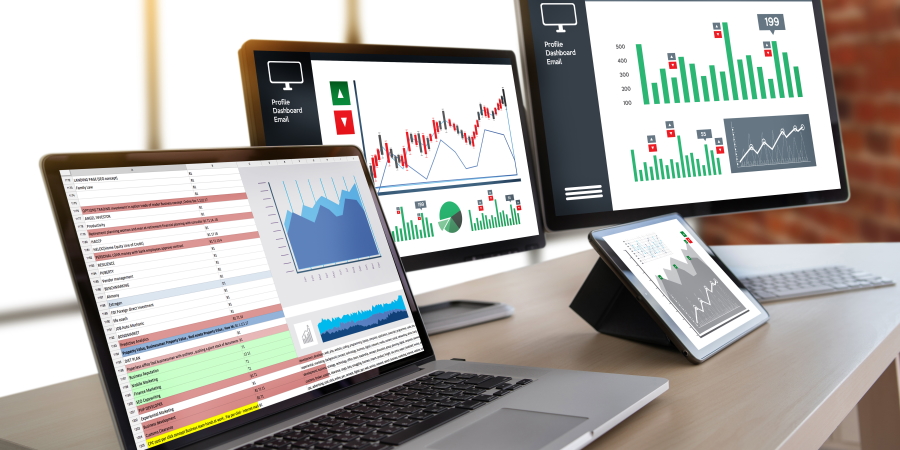
Predictive analytics is the use of past data to extrapolate possible future scenarios and is made possible by big data. The larger and more varied the dataset, the more accurate the prediction will be; hence the necessity for massive computing power.
Before human analysis, the data is usually processed using AI and/or machine learning techniques to spot patterns, trends, and markers that may imply certain events or trajectories. These results are then packaged into a format designed for human consumption for further analysis—ideally yielding actionable insights.
Manufacturers, for example, can use predictive analytics to prevent machine faults from occurring. They would do so by collecting real-time streams of machine health data—a combination of heat detectors, vibration detectors, ultrasound, acoustic sensors and so on. This data can be analyzed for changes to normal operation.
The frequency emitted by a fast-rotating part may have changed, for example. This is then cross-referenced against past data and/or industry benchmarks for that machine to see what the change might mean. Previous instances of this frequency change may have previously preceded rotating part x corroding beyond repair, for example. By catching this early sign, technicians can extrapolate what would happen in the future if the part was left as is, including how long they have to replace it before it becomes a more serious problem.
One of the most exciting use cases for predictive analytics—and one we can all relate to—is in healthcare. Data-based risk modeling has long been a feature of medicine in one form or another; at least since the discovery that certain conditions run in the family. In more modern times, the screening of genetic markers for breast cancer, and inheritable conditions in fetuses, is commonplace. However, these tend to rely on simplistic “if… then” statements. If this genetic marker is present in your genome, then you have x% risk of developing this condition. Predictive analytics is set to transform the way healthcare is delivered.
By gathering all available health information on an individual—genetics, lab results, questionnaire answers, and data streams from wearable devices such as lifestyle information and real-time vitals—each person can be individually assessed for their risk of developing particular conditions, benchmarked against the rest of the population. It’s the same principle as preventatively servicing industrial equipment. This enables doctors to shift from reactive, episodic medicine—where treatment is given only when symptoms present—to a more preventative, proactive model; giving medication and lifestyle recommendations to intervene before the condition worsens.
On the other side of the coin, the same predictive analytics-enabled preventative maintenance practiced in manufacturing can be applied in medicine. Keeping healthcare machines running will only become more important as the data they produce becomes ever-more essential to the way medicine is delivered.
Relatively speaking, predictive analytics is in its infancy. In the future, its impact will resonate across every sector, massively amplified by the proliferation of the Internet of Things (IoT). As the IoT digitizes and quantifies physical objects, there will be an explosion of data to feed predictive analytics, pivoting industry, policy, and healthcare away from reactive methods, and towards proactive approaches.
On a more prosaic scale, the impact is already on display. Manufacturers are innovating new service models. Where previously they sold machines on a transactional basis, predictive analytics has catalyzed the Product as a Service model. Manufacturers are increasingly charging for outcome-based service contracts rather than equipment, that is, for example, the continued ability to take x-rays, rather than the x-ray scanner itself. With the ability to remotely monitor, troubleshoot, and predict machine health, manufacturers can extend the productive life of a machine, maximize its operational efficiency, and minimize downtime. The end user needn’t concern themselves with the equipment, other than in its use.
This model improves customer experience—with issues often highlighted by the manufacturer before they’ve even presented as a problem to users—while amplifying revenue opportunities for manufacturers. One industrial manufacturer estimates there is $12 of potential service revenue for every $1 of machine sales. According to the IDC, 40% of the top 100 discrete manufacturers globally plan to offer product-as-a-service platforms. Similar effects will be felt in other sectors. Predictive analytics is already transforming banking and finance, city planning, the energy sector, and retail.
As with all technology, it takes time to scale up from initial, simple use cases, to mature, complex uses—both for individual organizations and globally. The key now for organizations is to explore how predictive analytics can fit into their digital strategies, so they can lay the groundwork for the future.

As a Digital Content Marketing Manager, I bring the latest technology stories to the forefront. I'm passionate about engaging readers and empowering decision makers with relevant, up-to-date content.
©Copyright 2025. All rights reserved by Modelcam Technologies Private Limited PUNE.